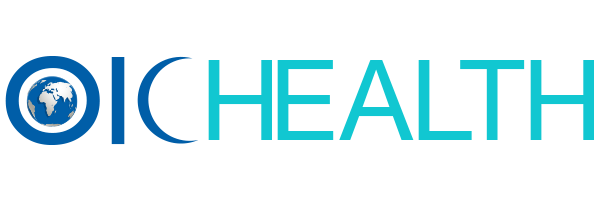
While some OIC member countries are frequently exposed to natural disasters, some others face conflicts and other instabilities disordering the public life and disturbing the socio-economic development.
In such circumstances, whole system for public services may be broken down and essential services required by the affected people may not be effectively provided. Particularly, insufficient provision of the health services can further exacerbate the emergency situation with disease outbreaks and other long-term health problems.
In order to be able to manage such complex situations, carefully designed and coordinated actions should be taken to minimize the loss of lives and prevent pandemics.
Most important challenge in health emergencies is the ability to ensure that the actions of all health actors are coordinated and, in particular, the actions of external health actors are well coordinated with those of the national and local health authorities and actors. While an existing health strategy plan for planning health response throughout the affected area(s), including the allocation of resources among areas, could significantly ease the coordination, an operational strategy is usually not available in crisis-affected countries.
Another important challenge whenever an emergency occurs is to identify gaps in the availability of health services for the crisis-affected population and the coverage of essential services and quickly address them. Similarly, the ability of a health service to expand beyond normal capacity to meet increased demand for health services is an important factor of emergency health support systems.
In this regard, effective human resource management is essential to ensure adequate staff capacity and the continuity of operations during emergencies. For the mobilization and effective coordination of all social sectors, a common action plan should be developed together with relevant national and local actors and NGOs, to identify health priorities, particularly in the early recovery phase, and find the balance between urgent service delivery needs and re-building national systems in the longer term.
In particular, protracted crises, or mainly complex emergencies, have a severe impact on health systems in the affected countries. While unreliable and incomplete information hinders sound decision making for effective response, rapidly evolving conditions increase uncertainty.
Health professionals in conflict affected countries often have limited experience in analysing the major distortions of disrupted health systems and formulating measures to develop effective strategies and plans for health system revision. Special attention, therefore, should be paid to resolve such circumstances, particularly through regional and international cooperation.
Common gaps in the humanitarian health sector response
Although pre-crisis and post-crisis planning is important, immediate response of the health sectors is the most crucial one in saving lives. At this stage, focus should initially be given to ensuring the delivery of essential services. Whenever essential services have been assured and life-threatening humanitarian needs are met, the scope of services can be expanded.
In most cases, resources are not sufficient to meet all needs, therefore effort and resources should be concentrated where they can make difference. Once essential emergency services are provided, services for any remaining humanitarian needs can be delivered while concurrently shifting the focus towards re-building national systems and capacities. However, there are significant gaps in humanitarian health response in OIC member countries.
A report by Inter-Agency Standing Committee (IASC, 2007), identifies important gaps in the humanitarian health sector under three categories based on a review of 10 country-case studies, 7 of them are OIC countries.
These gaps are, however, widespread in most disaster-hit / conflict-affected countries, particularly in low-income countries. The gaps are identified under the categories of information management and analysis, strategic planning and coordination, and service delivery.
Information management and analysis:
Before taking any action, a good quality of information on the people affected and their needs are required. People living at the periphery are often neglected and needs assessments usually lacks gender- and age-based analysis. However, in many cases, countries lack the capacity to collect the relevant data and monitor and evaluate the whole process, leading to the following general gaps:
· Lack of comprehensive, inclusive and timely assessment of health needs of the affected population
· Ambiguity around population to be targeted and lack of clear definition and quantification of vulnerable groups
· Lack of common key indicators and targets for the health sector response
· Lack of data for monitoring and planning including malnutrition, mortality and morbidity
· Inadequate level of monitoring and evaluation of quality and impacts of interventions
· Strategic planning and coordination: Perhaps the most crucial elements for effective health emergency response are strategic planning and coordination. Presence of a contingency plan and clear definition of roles and responsibilities prior to an emergency situation are strongly required. However, the following gaps are commonly observed:
· Ineffective health sector and inter-sectoral coordination mechanism as well as poor coordination of plans and communication of activities
· Considerable gaps in geographical coverage of health services, mostly due to inaccessibility and insecurity
· Insufficient financial resources to implement essential actions to minimize preventable mortality and morbidity
· Failure to link emergency services with existing capacities, e.g., setting up a tented clinic without support of the local health centre
· Absence of contingency and implementation plans addressing the whole affected area
· Lack of trained health staff and lack of financial incentives for local health workers
· Service delivery: Once affected people are prioritized according to their level of vulnerabilities and needs to health services and appropriate coordination mechanism is established, adequate services should be properly provided. Some challenges faced in service delivery are the followings:
· Insufficient health care for malnourished and limited access to emergency obstetric care, resulting in high child and maternal mortality
· Lack of real time analysis and standard reporting of disease outbreaks
· Inadequate access to sufficient safe water resources and lack of prevention of water-borne diseases
· Lack of standardized prevention and treatment of communicable diseases appropriate to the epidemiological setting and phase of response
· Lack of mental health and psycho-social support
· Inadequate supply chain systems, including procurement, storage and distribution of drugs and medical supplies
· Disorganized referral mechanisms with limited access to life-saving secondary or tertiary care
· Inadequate laboratory capacity for diagnosis of diseases and confirmation of outbreaks.

